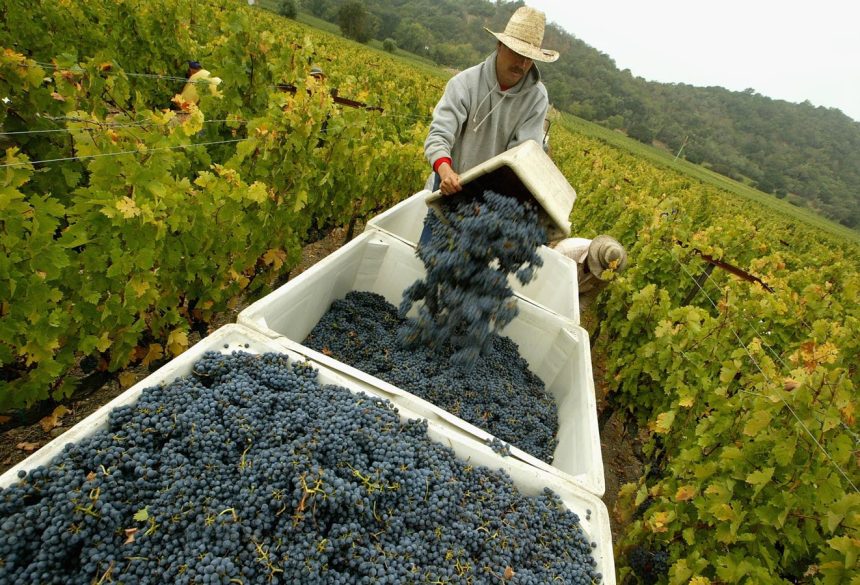The 2024 State of the U.S. Wine Industry report, a venerable industry benchmark now in its 24th year, paints a picture of a sector grappling with significant headwinds, yet poised for a period of transformative change. Authored by Rob McMillan, the report acknowledges the prevailing stagnation in wine sales growth, attributing it to a confluence of factors, including shifting consumer preferences among younger demographics, a natural decline in consumption among older generations, and an enduring oversupply of wine, particularly in key regions like California. Despite these challenges, McMillan’s analysis maintains a thread of optimism, emphasizing the industry’s capacity for evolution and innovation. He stresses, however, that proactive strategies, not mere hope, are essential for navigating the current landscape and capitalizing on future opportunities.
Central to the report’s findings is the imperative for the wine industry to undergo a market correction driven by demand rather than supply, a shift not seen in nearly three decades. With older consumer segments diminishing, the industry must prioritize engaging the 30-45 age cohort through targeted marketing, product repositioning, and a renewed focus on cutting through the noise of a competitive beverage market. This demographic holds the key to future growth, and capturing their attention requires a deeper understanding of their evolving tastes and preferences. Simultaneously, the report acknowledges the continued trend of younger consumers, particularly those aged 21-29, either abstaining from alcohol altogether or opting for alternatives like ready-to-drink (RTD) beverages, low/no alcohol options, and spirits. This global shift in consumption patterns further underscores the need for the wine industry to adapt and innovate.
The report’s analysis of production data reveals a stark reality: California, the heart of U.S. wine production, is experiencing a significant downturn. The 2024 crush is projected to be the smallest since 2008, a clear indication of the oversupply issue plaguing the market. This excess inventory will inevitably lead to pricing adjustments, with discounts and promotional offers becoming increasingly common to move product. Consumers can expect to find deals through various channels, including flash sales sites, private label offerings, and wines marketed by negotiants – wholesalers who purchase wine or its components from producers and repackage it under their own brands. While established labels may be reluctant to adjust their core pricing, they are likely to offer incentives such as free shipping to stimulate sales. This period of market correction presents a unique opportunity for value-seeking consumers.
Beyond consumer trends and production figures, the report delves into the industry’s internal sentiment, gauging the mood and outlook among producers. Utilizing the Michigan Consumer Sentiment Index methodology, the report identifies a prevailing sense of unease, with the index reaching a 10-year low. Concerns surrounding the broader economy, labor challenges, and evolving consumer demand patterns contribute to this negative sentiment. The rise of alternative beverage categories, such as RTDs with their substantial $18 billion in annual sales, further complicates the landscape for traditional wine producers. Water availability, a critical factor in wine production, adds another layer of concern, particularly in drought-prone regions.
The report highlights a stark contrast in sentiment between different wine-producing regions. Producers in California’s Central Valley, the source of nearly 75% of all wine grapes, express the bleakest outlook, with a majority reporting a disappointing year. Conversely, Virginia, a smaller but growing wine region, exhibits a significantly more positive sentiment. This disparity underscores the complex and nuanced nature of the industry’s challenges and the varying impact on different regions. McMillan cautions against overgeneralizing based on averages, emphasizing the resilience of winery owners, particularly those with established brands and strong financial foundations. These producers are better positioned to weather the current storm and emerge with renewed vigor.
Despite the prevalent concerns, the report’s survey data reveals a degree of underlying strength within the industry. While few wineries characterize their financial health as “very strong” or “rock solid,” a significant portion report a positive financial standing, suggesting a degree of resilience and adaptability. This capacity to endure challenges, combined with a proactive approach to market changes, positions the U.S. wine industry for a period of transformation. By embracing innovation, responding to evolving consumer preferences, and addressing the current oversupply, the industry can navigate this period of uncertainty and emerge stronger, laying the groundwork for future growth and success. The report ultimately serves as a call to action, urging the industry to embrace change and proactively shape its future rather than passively accepting the status quo.



